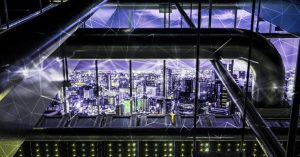The transportation industry is undergoing a significant revolution, driven by rapid advancements in technology. From self-driving cars to electric scooters and hyperloop systems, technology is reshaping the way we move people and goods. This article explores the various innovations and technologies that are transforming transportation, making it more efficient, sustainable, and connected than ever before.
Electric Vehicles (EVs)
Electric vehicles are one of the most significant advancements in transportation technology. EVs are powered by electricity and produce zero tailpipe emissions, making them an eco-friendly alternative to traditional internal combustion engine vehicles. The development of more efficient batteries and charging infrastructure has accelerated the adoption of electric cars, contributing to a greener and cleaner transportation future.
Autonomous Vehicles (AVs)
Autonomous vehicles, also known as self-driving cars, are another groundbreaking technology that is revolutionizing transportation. AVs use various sensors, cameras, and AI algorithms to navigate and operate without human intervention. The potential benefits of AVs include improved road safety, reduced traffic congestion, and increased mobility for people with disabilities or limited access to transportation.
Ride-sharing and Mobility-as-a-Service (MaaS)
Ride-sharing platforms like Uber and Lyft have disrupted traditional transportation models by providing convenient, on-demand mobility solutions. Mobility-as-a-Service (MaaS) takes this concept further, integrating various transportation options, including ride-sharing, public transit, bike-sharing, and more, into a single, seamless service accessible through a mobile app. MaaS aims to optimize transportation choices and encourage multi-modal travel for enhanced efficiency and reduced environmental impact.
Hyperloop and High-Speed Rail
Hyperloop and high-speed rail systems represent the future of long-distance transportation. Hyperloop is a futuristic concept that involves high-speed pods traveling through low-pressure tubes, potentially reaching speeds close to the speed of sound. High-speed rail, on the other hand, offers efficient and fast transportation between major cities, reducing the need for short-haul flights and contributing to sustainable mobility.
Electric Scooters and Micromobility
Electric scooters and micromobility solutions have gained popularity in urban areas as a convenient and eco-friendly mode of transportation. Electric scooters can be rented through smartphone apps, providing a last-mile solution for commuters and reducing reliance on cars for short trips. These micromobility options play a significant role in reducing congestion and lowering carbon emissions in cities.
Connected and Smart Transportation Systems
The rise of the Internet of Things (IoT) and smart city technologies has enabled the development of connected transportation systems. These systems use real-time data and sensors to optimize traffic flow, monitor vehicle performance, and enhance overall transportation efficiency. Connected vehicles can communicate with traffic signals and other infrastructure, allowing for adaptive traffic management and reducing travel times.
Drones and Unmanned Aerial Vehicles (UAVs)
Drones and UAVs are transforming the way goods are transported, especially in remote or hard-to-reach areas. Delivery drones have the potential to provide fast and efficient delivery services, reducing the need for traditional delivery vehicles and associated carbon emissions. Additionally, UAVs are used in surveying and monitoring applications, aiding in various industries like agriculture, disaster response, and infrastructure inspection.
Sustainable Aviation and Electric Aircraft
The aviation industry is also undergoing a transformation towards sustainability. Sustainable aviation fuels (SAF) are being developed, which have a lower carbon footprint than traditional jet fuels. Moreover, electric aircraft are being researched and developed to create zero-emission options for short-haul flights, contributing to a greener aviation sector.
Here are some of the latest quantitative details and stats for sustainable aviation and electric aircraft, based on the sources:
- 1. According to a report by McKinsey, the aviation industry has committed to achieving net-zero flying by 2050, but the path to reaching that goal is complex and requires various actions, such as fleet renewal, disruptive propulsion technologies, operational efficiency, sustainable aviation fuel (SAF) usage, and carbon offsetting.
- 2. According to a report by PwC, airlines can cut up to 70% of aviation emissions by 2050 by improving engine and aircraft efficiency, broadly adopting SAF, and optimizing aircraft operation. However, the report also warns that many airlines will miss their net-zero goals if air traffic continues to grow faster than GDP.
- 3. According to the World Meteorological Organization (WMO), the global average temperature in 2023 was 1.2°C above the pre-industrial level, making it the sixth warmest year on record. The report also warns that the world is likely to breach the 1.5°C limit of the Paris Agreement in the next five years, unless urgent and ambitious action is taken to reduce greenhouse gas emissions.
- 4. According to the Living Planet Report 2023, the global population of mammals, birds, amphibians, reptiles, and fish declined by 68% between 1970 and 2020, due to human activities such as habitat loss, overexploitation, pollution, and climate change. The report also highlights the importance of nature for human well-being, health, and security, and urges for a “New Deal for Nature and People” that can halt and reverse the loss of biodiversity by 2030.
- 5. According to AirlineGeeks, electric aircraft, much like electric cars, rely on batteries to power their propulsion systems. They promise significant reductions in carbon emissions and noise pollution. Several companies have thrown their hats into the electric aviation ring, such as Eviation, Airbus, and Pipistrel.
- 6. According to Aviation Today, the aviation industry is investing in eVTOLs (electric vertical take-off and landing aircraft) powered by batteries or hydrogen fuel cells, to tackle the challenges of urban air mobility and sustainability. Another solution, SAF, offers a lifecycle carbon reduction of 80%.
Transportation Data Analytics and Predictive Modeling
Data analytics and predictive modeling play a vital role in optimizing transportation systems. By analyzing vast amounts of data, including traffic patterns, user preferences, and weather conditions, transportation operators can make data-driven decisions to improve efficiency, safety, and the overall user experience.
Environmental Impact and Climate Change Mitigation
The transportation revolution is not only about improving mobility but also addressing environmental concerns. With a focus on sustainability, these advancements in transportation technology aim to reduce greenhouse gas emissions, minimize air pollution, and combat climate change, ultimately creating a greener and more sustainable world.
Here are some of the latest quantitative details and stats for environmental impact and climate change mitigation, based on the sources:
- 1. According to the Global Sustainable Development Report (GSDR) 2023, the world is not on track to achieve the Sustainable Development Goals (SDGs) by 2030, and incremental and fragmented change is insufficient to address the complex and interrelated challenges of sustainable development. The report calls for science-based transformations that can accelerate progress towards the SDGs, such as decarbonizing the energy system, promoting circular economy, and enhancing biodiversity conservation.
- 2. According to the World Meteorological Organization (WMO), the global average temperature in 2023 was 1.2°C above the pre-industrial level, making it the sixth warmest year on record. The report also warns that the world is likely to breach the 1.5°C limit of the Paris Agreement in the next five years, unless urgent and ambitious action is taken to reduce greenhouse gas emissions.
- 3. According to the Living Planet Report 2023, the global population of mammals, birds, amphibians, reptiles, and fish declined by 68% between 1970 and 2020, due to human activities such as habitat loss, overexploitation, pollution, and climate change. The report also highlights the importance of nature for human well-being, health, and security, and urges for a “New Deal for Nature and People” that can halt and reverse the loss of biodiversity by 2030.
- 4. According to a report by PwC, the global deal value reached $3.6 trillion in 2022, the highest since 2015, despite the challenges posed by the COVID-19 pandemic. The report also predicts that the deal activity will remain strong in 2023, driven by factors such as digital transformation, customer centricity, regulation, and collaboration. The report also emphasizes the need for environmental, social, and governance (ESG) considerations in deal-making, as they can create value, reduce risk, and enhance reputation.
- 5. According to a report by IPCC, the mitigation of climate change involves reducing or preventing the emissions of greenhouse gases, as well as enhancing the sinks that remove them from the atmosphere. The report assesses the sources of global emissions and explains the developments in emission reduction and mitigation efforts. The report also provides various scenarios and pathways to achieve the Paris Agreement goals, based on different levels of ambition, cooperation, and innovation.
Infrastructure and Charging Networks
As electric vehicles become more popular, the need for robust charging infrastructure becomes essential. Building an extensive network of charging stations is critical to supporting the widespread adoption of electric vehicles. Governments and private companies are investing in the development of charging infrastructure in cities, along highways, and in public spaces. Additionally, smart charging technologies and grid integration ensure efficient electricity use and minimize the strain on the power grid during peak charging times.
Advanced Traffic Management Systems
Advanced traffic management systems leverage technology to optimize traffic flow and reduce congestion. These systems use real-time data from cameras, sensors, and GPS devices to monitor traffic patterns and adjust traffic signals accordingly. By dynamically adapting traffic signals to current conditions, transportation authorities can improve traffic flow, reduce travel times, and lower fuel consumption, contributing to a more sustainable transportation system.
Mobility for Smart Cities
Smart city initiatives integrate various transportation technologies to create a seamless and efficient mobility experience. Connected and autonomous vehicles, smart traffic management, and integrated public transit systems enable citizens to move around cities more effortlessly and sustainably. Smart city projects focus on enhancing the quality of urban life, reducing pollution, and promoting multi-modal transportation options.
Freight and Logistics Optimization
Efficient freight and logistics management are vital for sustainable transportation. Advanced analytics and AI algorithms optimize freight routes, load distribution, and delivery schedules to minimize fuel consumption and emissions. The adoption of electric and hybrid delivery vehicles further contributes to reducing the environmental impact of the transportation of goods.
Decentralized and Peer-to-Peer Mobility
Decentralized mobility platforms are emerging, allowing individuals to rent out their vehicles or participate in car-sharing programs. Peer-to-peer mobility solutions enable a more efficient use of existing vehicles, reducing the need for car ownership and, consequently, the number of vehicles on the road. This model promotes resource sharing and contributes to a more sustainable transportation ecosystem.
Accessibility and Inclusivity
Technology is also driving advancements in accessibility and inclusivity within transportation. Ride-sharing and on-demand mobility services offer accessible options for individuals with disabilities or limited mobility. Moreover, mobility apps and digital platforms provide real-time information on accessible routes and transportation options, empowering individuals to navigate the transportation network more effectively.
Public-Private Partnerships
The transportation revolution relies on collaboration between the public and private sectors. Public-private partnerships (PPPs) facilitate the deployment of innovative transportation solutions by combining resources, expertise, and regulatory support. Governments provide the necessary infrastructure and policy framework, while private companies bring in technological innovations and investments to drive progress in the transportation industry.
Security and Safety
As transportation becomes increasingly connected, ensuring security and safety is paramount. Cybersecurity measures must be in place to protect connected vehicles and transportation systems from potential cyber threats. Additionally, technologies like vehicle-to-vehicle (V2V) communication and collision avoidance systems enhance road safety and reduce the risk of accidents.
Addressing Last-Mile Delivery Challenges
The last mile of delivery presents unique challenges in urban areas. Solutions like micro-distribution centers, delivery lockers, and drone delivery are being explored to address last-mile challenges. By optimizing the last leg of delivery, companies can reduce delivery times and carbon emissions, especially in densely populated urban areas.
Environmental Sensing and Pollution Monitoring
Technology is also used for environmental sensing and pollution monitoring to assess the impact of transportation on air and water quality. Real-time data from sensors and satellite imagery provides valuable insights into pollution levels, enabling policymakers to take targeted measures to reduce emissions and improve environmental health.
The transportation revolution, driven by technology, continues to transform the way we move people and goods. From building sustainable charging networks for electric vehicles to implementing smart traffic management systems and embracing peer-to-peer mobility solutions, these advancements create a more efficient, connected, and eco-friendly transportation ecosystem. Public-private partnerships, accessibility initiatives, and environmental monitoring further contribute to creating a sustainable and inclusive transportation future. Embracing these innovative technologies and strategies will be essential to addressing global transportation challenges and shaping a better, greener, and more efficient world for generations to come.






